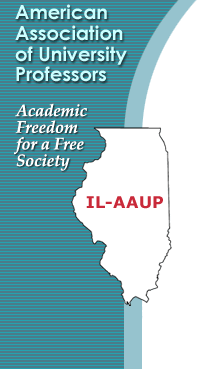Home | IL Academe | About IL AAUP | Conference Corner | Calendar | Services | Committees | Contact Us | Grants | Reports | Links
 |
 |
 |
The Death Spiral in Public Higher Education
Rising tuition, decreased state funding, and financial pressures are leading to a “death spiral” for public higher education, according to University of Illinois professor Christopher Higgens. In a lecture at Eastern Illinois University earlier this year, Higgens said many taxpayers view higher education as a means to obtain credentials for the job market and view students as interested in the private gain of potential salary. These taxpayers, unfortunately, reject the view of education as a public good. In Illinois, state funding support for higher education has been declining since 2002; there is no sign that this decline will be reversed. The current governor, Bruce Rauner, has essentially cut state support for colleges and universities 100 percent. He favors privatization of education and apparently doesn’t care if the public higher education fails. The current budget stalemate between Governor Rauner and House Speaker Michael Madigan shows no sign of resolution. The lack of state funding has impacted the following Illinois community colleges and universities:
Things are not looking better for EIU since their fall 2016 enrollment dropped by 14%. It remains to be seen whether performance-based funding as proposed by the U of I will be seen as a model for adequate state funding for other public colleges and universities. If the U of I plan is accepted by the state legislature, this approach could set a possible trend for the General Assembly to determine curriculum and other components of the higher education mission. Politicians might be making educational decisions normally made by faculty and educational professionals. |
|